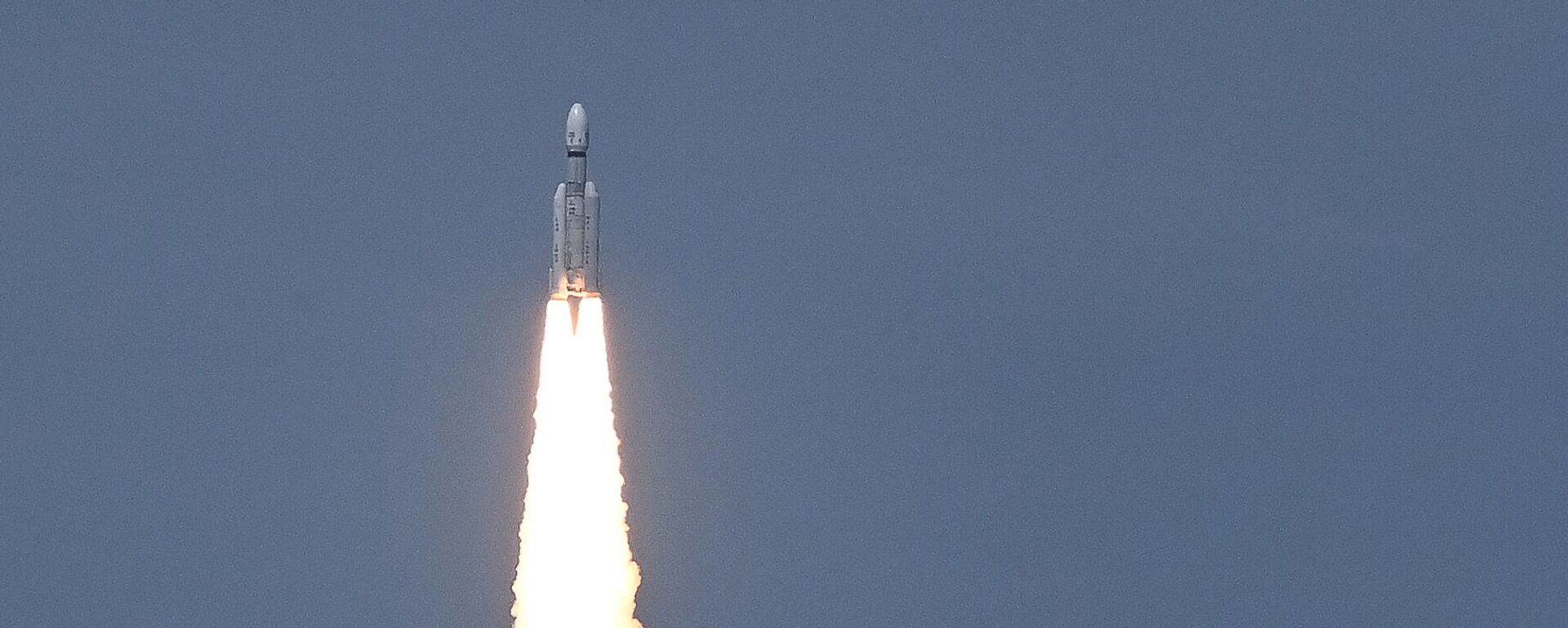https://en.sputniknews.africa/20230916/1062146897.html
Earth's Electrons May Aid in Water Formation on Moon: India's Chandrayaan-1 Data Reveals
Earth's Electrons May Aid in Water Formation on Moon: India's Chandrayaan-1 Data Reveals
Sputnik Africa
Chandrayaan-1 is India's first lunar probe under the Chandrayaan program, launched in October 2008. The study analyzes data collected during the mission and... 16.09.2023, Sputnik Africa
2023-09-16T02:01+0200
2023-09-16T02:01+0200
2023-09-16T09:40+0200
earth
india
moon
international
science
water resources
space
space exploration
https://cdn1.img.sputniknews.africa/img/07e7/09/10/1062146940_0:109:2096:1288_1920x0_80_0_0_fb32d96a94c8f138dfafc7f12c24e1e3.jpg
Scientists have unearthed a captivating link between the Earth and the moon, revealing that electrons from our planet's magnetosphere might be the architects behind the formation of water on the lunar surface. The recent remarkable revelation stems from an in-depth analysis of data collected during the Chandrayaan-1 mission.The study unravels the mystery behind the presence of water ice on the moon's perpetually shadowed regions. Researchers have postulated that high-energy electrons within the plasma sheet of Earth's magnetosphere play a pivotal role in lunar surface weathering, and could have played a crucial role in the creation of water.Earth's magnetosphere, responsible for safeguarding our planet from space weather and the sun's radiation, holds a key role in this groundbreaking phenomenon. As the solar wind interacts with Earth's magnetosphere, it sculpts the magnetic field into a comet-like tail on the night side. This tail region, known as the plasma sheet, harbors a host of charged particles, including high-energy electrons and ions from both Earth and the solar wind.Building upon prior research that unveiled the rusting of iron in the lunar polar region due to oxygen in Earth's "magnetotail," scientists turned their attention to studying surface weathering as the moon traversed Earth's magnetotail.Analyzing remote sensing data collected by the Moon Mineralogy Mapper during the Chandrayaan-1 mission between 2008 and 2009, researchers focused on changes in water formation as the moon journeyed through Earth's magnetotail.One intriguing discovery was that water formation in the magnetotail appeared to be consistent whether the moon was within it or not. This hints at the presence of water formation processes or sources that are not directly linked to solar wind protons, opening up new avenues of exploration in our quest to understand the origins of lunar water.The study was published in the Nature Astronomy journal.
https://en.sputniknews.africa/20230903/rover-of-indias-lunar-mission-completes-assignments-set-into-sleep-mode-space-agency-says-1061825406.html
earth
india
moon
space
Sputnik Africa
feedback@sputniknews.com
+74956456601
MIA „Rossiya Segodnya“
2023
News
en_EN
Sputnik Africa
feedback@sputniknews.com
+74956456601
MIA „Rossiya Segodnya“
Sputnik Africa
feedback@sputniknews.com
+74956456601
MIA „Rossiya Segodnya“
earth, india, moon, international, science, water resources, space, space exploration
earth, india, moon, international, science, water resources, space, space exploration
Earth's Electrons May Aid in Water Formation on Moon: India's Chandrayaan-1 Data Reveals
02:01 16.09.2023 (Updated: 09:40 16.09.2023) Chandrayaan-1 is India's first lunar probe under the Chandrayaan program, launched in October 2008. The study analyzes data collected during the mission and explores how high-energy electrons within the Earth's plasma sheet, a region within the magnetosphere, contribute to the weathering of the lunar surface and may aid in the formation of water.
Scientists have unearthed a captivating link between the Earth and the moon, revealing that electrons from our planet's magnetosphere might be the architects behind the formation of water on the lunar surface.
The recent remarkable revelation stems from an
in-depth analysis of data collected during the Chandrayaan-1 mission.
The study unravels the mystery behind the presence of water ice on the moon's perpetually shadowed regions. Researchers have postulated that high-energy electrons within the plasma sheet of Earth's magnetosphere play a pivotal role in lunar surface weathering, and could have played a crucial role in the creation of water.
Earth's magnetosphere, responsible for safeguarding our planet from space weather and the sun's radiation, holds a key role in this groundbreaking phenomenon.
As the solar wind interacts with Earth's magnetosphere, it sculpts the magnetic field into a comet-like tail on the night side. This tail region, known as the plasma sheet, harbors a host of charged particles, including high-energy electrons and ions from both Earth and the solar wind.
Building upon prior research that unveiled the rusting of iron in the
lunar polar region due to oxygen in Earth's "magnetotail," scientists turned their attention to studying surface weathering as the moon traversed Earth's magnetotail.
"This provides a natural laboratory for studying the formation processes of lunar surface water. When the moon is outside of the magnetotail, the lunar surface is bombarded with solar wind. Inside the magnetotail, there are almost no solar wind protons, and water formation was expected to drop to nearly zero," explained lead researcher Shuai Li.
Analyzing remote sensing data collected by the Moon Mineralogy Mapper during the Chandrayaan-1 mission between 2008 and 2009, researchers focused on changes in water formation as the moon journeyed through Earth's magnetotail.
One intriguing discovery was that
water formation in the magnetotail appeared to be consistent whether the moon was within it or not. This hints at the presence of water formation processes or sources that are not directly linked to solar wind protons, opening up new avenues of exploration in our quest to understand the origins of lunar water.
The study was published in the Nature Astronomy journal.


